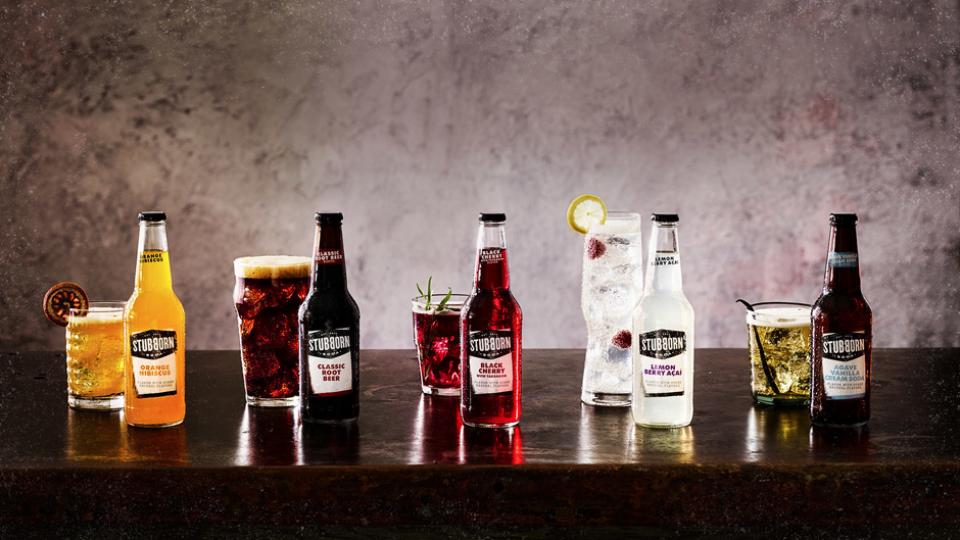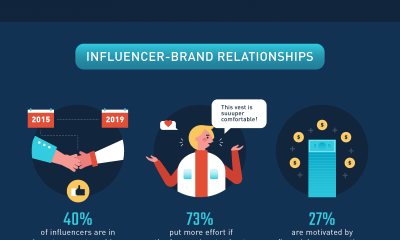Generational Marketing
Stories That Sell Packaging Are Now a Necessity
Talking to consumers through packaging also helps brands take the conversation offline.
Published
8 years agoon
By
BXP Staff
VIEWED FOR MANY YEARS as “nice to have,” content marketing—the practice of engaging prospective customers through content that informs, educates, entertains and inspires—is now a necessity among brands striving to stand out and build a loyal following. According to a recent survey by the Content Marketing Institute and MarketingProfs, 76% of B2C marketers have made content marketing an integral part of their strategies.
While the approach of content marketing is nothing new — the John Deere Company was publishing a magazine as far back as 1895 — market forces have converged to make it a necessity. Faced with the task of reaching consumers who have become adept at insulating themselves from traditional marketing messages, more brands are turning to the relationship-building powers of impactful, engaging content.
From the time content marketing as we know it first emerged as a mainstream marketing strategy, brands have focused their efforts on delivering content via online media; think blogs, e-newsletters, social media, podcasts, online videos, etc. But as the concept evolves and strategies grow in sophistication, more brands are incorporating offline tactics—including product packaging—into their storytelling and reaping the rewards.
Storytelling on pack
Like content marketing itself, the inclusion of storytelling elements on product packaging is hardly a new concept. General Mills has been telling the stories of renowned athletes on its Wheaties boxes since 1934 (originally on the back of the box, making the move to the front in 1958). Back in the early 1980s, Coleco’s packaging for the original Cabbage Patch Kids shared the mythology of how the Kids were “discovered” by “a young boy named Xavier Roberts” (the actual name of the dolls’ original designer).
So what makes content elements such a compelling option for packaging in 2016? As competition across all industries reaches unprecedented levels, content-based packaging offers brands an edge in reaching consumers who are increasingly immune to traditional brand messaging.
The content marketing advantage
For marketing strategists, using product packaging to tell a story, or to advance a story being told through multiple channels, offers a fresh opportunity for engaging consumers through a surprising medium. When buyers interact with product packaging, they expect to find branding elements and product information. By introducing storytelling into the mix, brands can offer a pleasant surprise that takes the experience to a deeper, more personal level.
AdvertisementTalking to consumers through packaging also helps brands set themselves apart by taking the conversation offline. According to the Q1 2016 Nielsen Total Audience Report, Americans spend more than 10 hours a day consuming electronic media through computers, tablets, smartphones and other devices. In an effort to get their content in front of these connected consumers, brands have collectively created a tsunami of blog posts, emails, tweets and other electronic media. By delivering content through product packaging, brands offer a three-dimensional, tangible experience that sets them apart from the deluge of online-only content publishers.
For marketers and package designers, featuring content elements alongside brand messaging and product information can offer a competitive advantage on the shelf. As any brand vying for attention on crowded retail shelves knows, any feature that can compel shoppers to stop and take notice offers a valuable edge, and many are recognizing the power of content in gaining that attention. Storytelling elements can arouse curiosity and demand a closer look, prompting a more intimate experience that’s more likely to inspire a purchase.
There’s another powerful factor in the urgency for brands to incorporate content into their packaging: millennials. At 75.4 million, the millennial population has surpassed Gen X and the Baby Boomers to become America’s largest generation. While previous generations grew up watching network television programs (and, of course, the ads that accompanied them), millennials’ developmental years were spent on the Internet, where they controlled the experience. As a result, millennial consumers are less likely to respond to traditional advertising and marketing messaging, insisting on a more personal brand experience before they buy. By incorporating content marketing into their packaging, brands can create that personal experience at the point when the consumer-brand relationship is at its most intimate: when the buyer holds the product in his or her hands.
Three brands unleashing the power of content
Package Design recently featured Kashi’s new look for its cereal boxes, featuring stories from behind the brand to foster a more personal connection and to highlight its commitment to healthy food that makes a positive impact on the world. For example, the box for Kashi Organic Promise Sprouted Grains Cereal features the story of Peggy Sutton, whose sprouted flours are used to create the product. The package tells the story of Peggy’s quest to uncover the reason for her ancestors’ long, healthy lives, which eventually led to the launch of her own sprouted flour company. As a closing call to action, Kashi directs readers to the KashiStories.com to watch a video version of Peggy’s story.
Kashi is one of the first brands to feature editorial-style stories on all packaging about where its products originate and how they are made. Kashi Dark Cocoa Karma Shredded Wheat Biscuits highlights the story of Newton Russell, one of first farmers to use the Certified Transitional protocol (an initiative to help farmers transition fields from conventional to organic), who grew the wheat featured in the product’s first batch. Other packaging features Wild Willow Farm & Education Center, a 5-acre working farm dedicated to educating the community about the progressive food movement and a source of Kashi’s inspiration for its own foods.
“Kashi is changing the way it showcases its quality, starting with the consumer’s first impression of the product on the shelves and the food itself,” says Tosh Hall, creative director of Jones Knowles Ritchie, the branding agency behind Kashi’s new packaging. “The visual identity system and packaging tell the story of the product’s quality, its origins and the dedicated people behind the Kashi brand.”
AdvertisementOf course, it’s not just health-conscious brands that are reaping the rewards of content on packaging. In 2015, Mars made a bold move with its Snickers brand by inserting content in the most unexpected of places: its own logo. As part of the brand’s “You’re Not You When You’re Hungry” and “Who Are You When You’re Hungry?” campaign, the Hunger Bars campaign replaced the Snickers name on single-bar wrappers with “hunger symptoms” such as “Cranky,” “Impatient” and “Whiny.”
Mars promoted the packaging campaign with the “Dial-a-Snickers” TV ad, featuring a hotline operator taking calls from frustrated friends and loved ones and dispatching bike messengers to deliver custom Snickers bars to those exhibiting annoying hunger symptoms. In the first four weeks of the campaign, sales of Snickers Bar Singles increased 16%.
The packaging campaign was so successful that Mars plans to bring it back in 2017, extending the scope to include Snickers Almond and Snickers Peanut Butter Squared bars and featuring new hunger symptoms such as “Drama Mama,” “Complainer” and “Forgetful.”
Sometimes packaging can play a role in content marketing not by telling a story in itself, but by advancing a story being told through multiple channels. This year PepsiCo is launching its new Stubborn Soda with a multifaceted content campaign in partnership with Robert Kirkman, creator and executive producer of “The Walking Dead” and “Outcast.”
Under the tagline, “It’s good to be Stubborn,” the campaign focuses on stories of individuals who are disrupting convention to bring their passions to life and achieve something great. “It’s no surprise I am stubborn about my creative process, which is why I like what the Stubborn brand is all about,” says Kirkman. “They are helping us tell the real, gritty stories of some of the best creators who aren’t afraid to go against conventional means.”
From the bottle label to the tap pull to the bar glass, Stubborn Soda’s packaging reflects the brand story through gritty design elements and unconventional presentation, as in the backwards “B.”
AdvertisementEssential experiences
As the level of competition increases, and as consumers demand a more personal connection before shelling out money for a brand, smart marketers are recognizing the power of content in their product packaging. And as Kashi, Snickers and Swagger Soda are demonstrating, storytelling and customization are no longer simply “nice to have” elements that raise eyebrows and maybe win an award or two—they’re essential elements in any campaign to offer consumers the personal experience they demand.

BXP elevates the value of innovative and collaborative brand package design as a strategic business competence across the omni-channel path to purchase, to ultimately help consumer facing and retail brands deliver more relevant experiences that connect with shoppers, win at shelf, own the moment of sale and maximize brand loyalty.
SPONSORED VIDEO
Branding with Ferocity – Thinking Like an Indie Brand
Get a better understanding on how to leverage new technologies to engage and delight shoppers, sustainability’s role in product and package design – being sustainable and premium are not mutually exclusive, plus best practices and tips for collaboration and how to launch new products and refresh existing product line-ups and brands.
You may like
Advertisement

GO MINIMALISM . . . HOLD ON A MINUTE!
Sustainable, 100% Recycled Transparent Sheeting is Now a Reality!

Kroger, Walgreens to Dedicate Section of Their Stores to Reusable Packaging

6 Marketing Tips for Ecommerce Brands to Win the Holiday Shopping Season

New Wunderoots Branding Celebrates the Carrot

Fact or Fiction? The Truth about Eco-Friendly Packaging

BXP May 2021 Think & Clink

Unilever Raises Bar for Accessibility with Degree Inclusive

Crown Royal’s Limited-Edition Pack Designed by Oscar-Winner

Coca-Cola Explores World of Paper Bottles
Subscribe

BULLETINS
Get the most important news and business
ideas from BXP Magazine's news bulletin.
Latest Tweets
Advertisement




